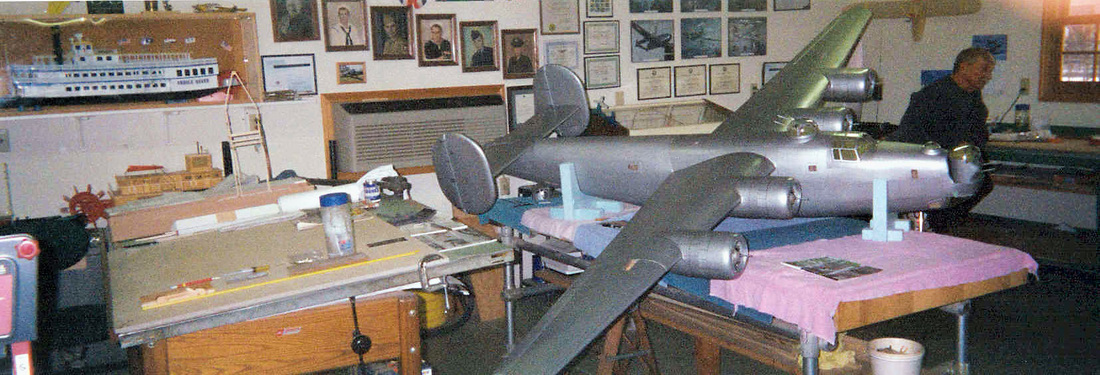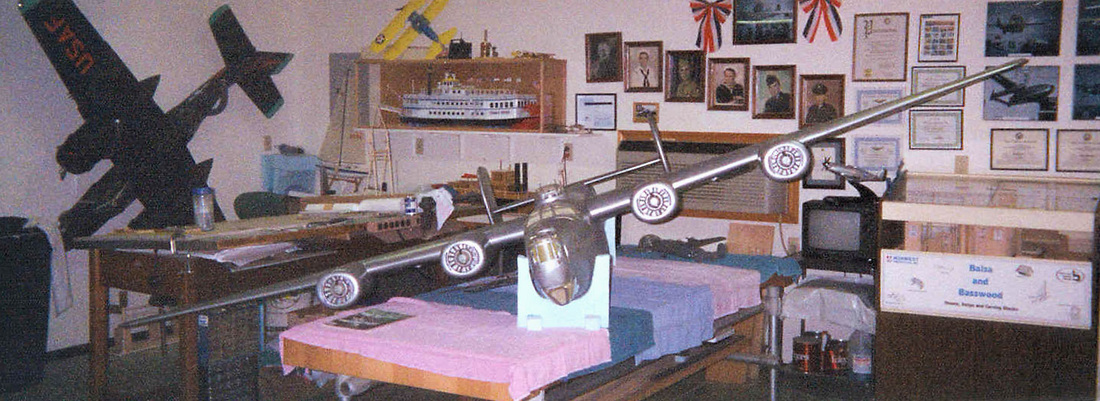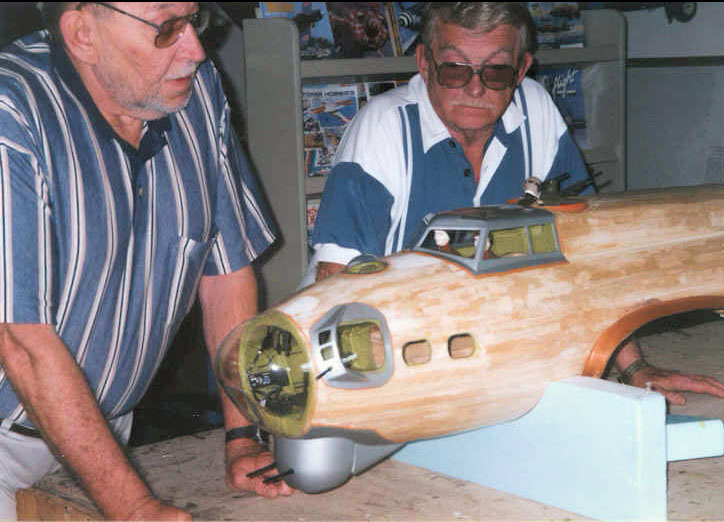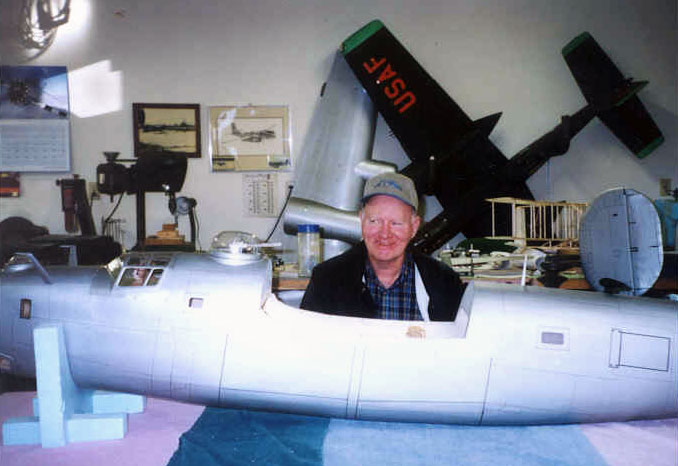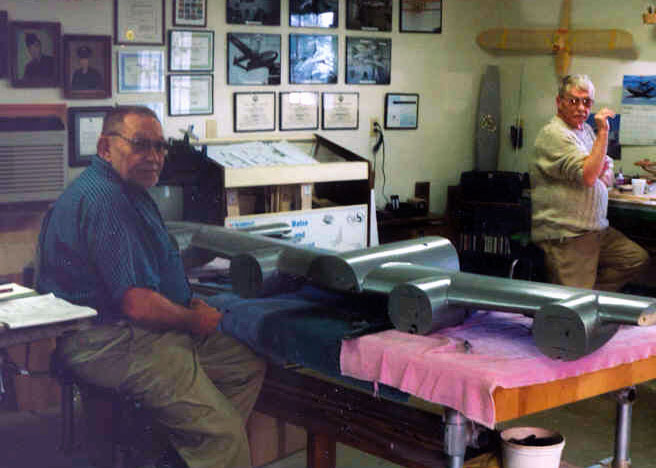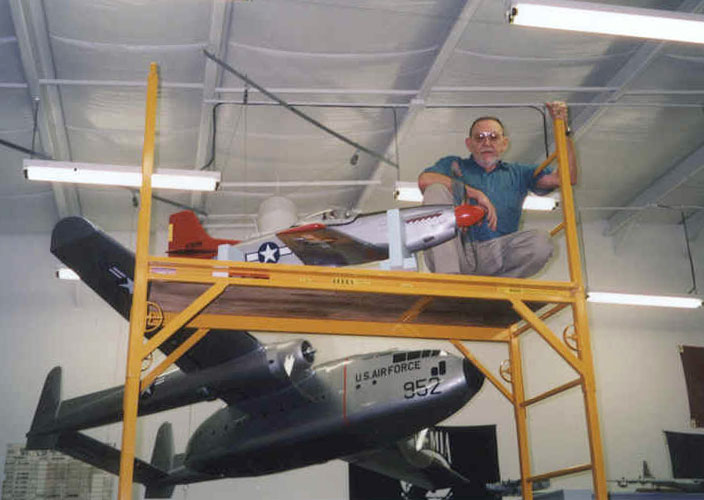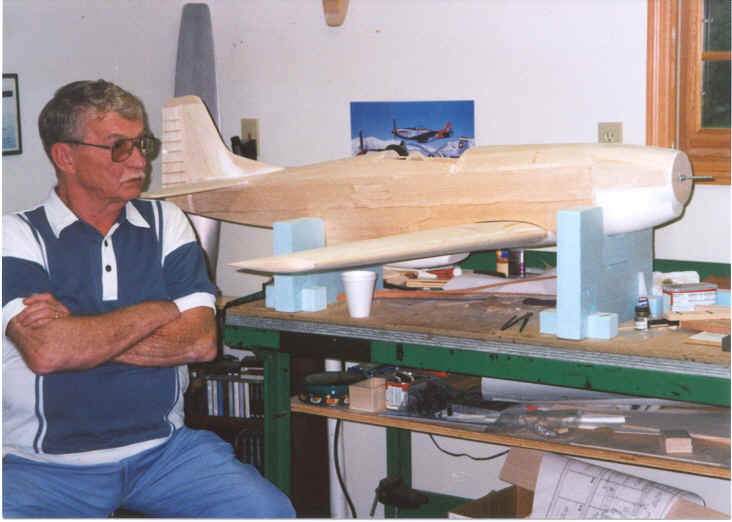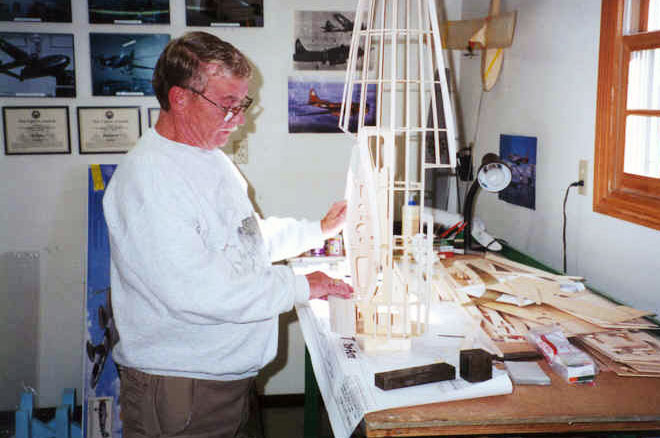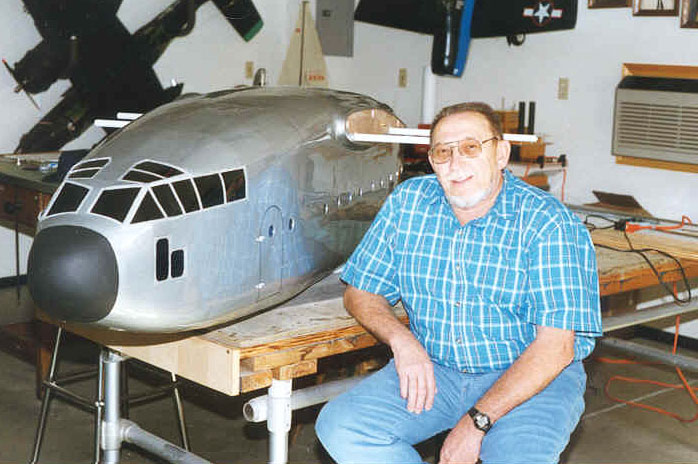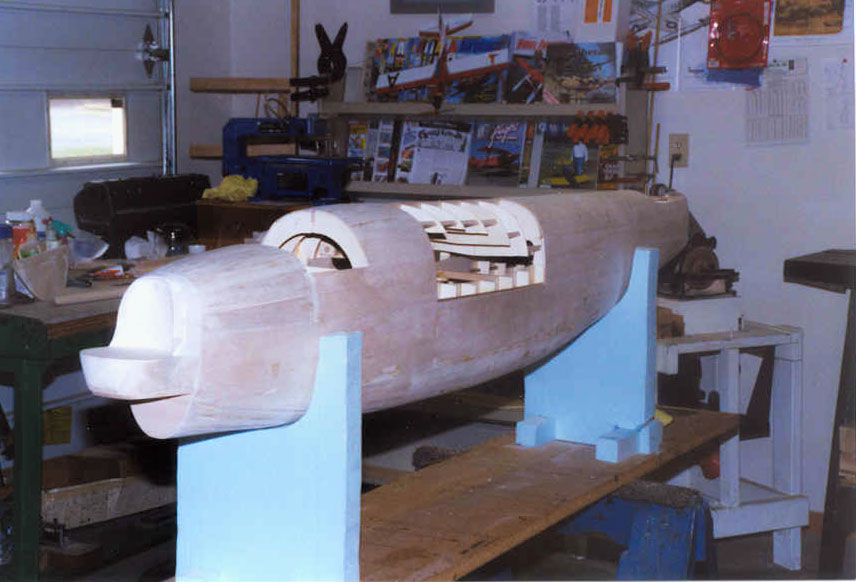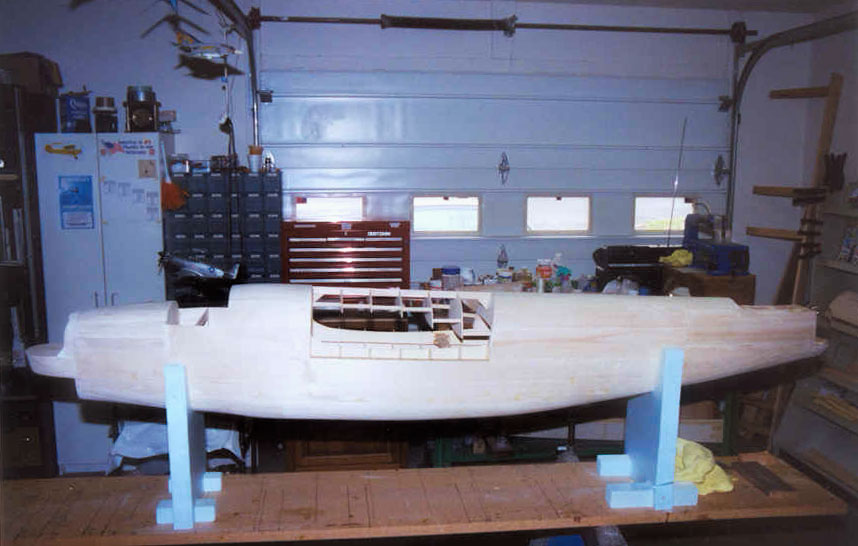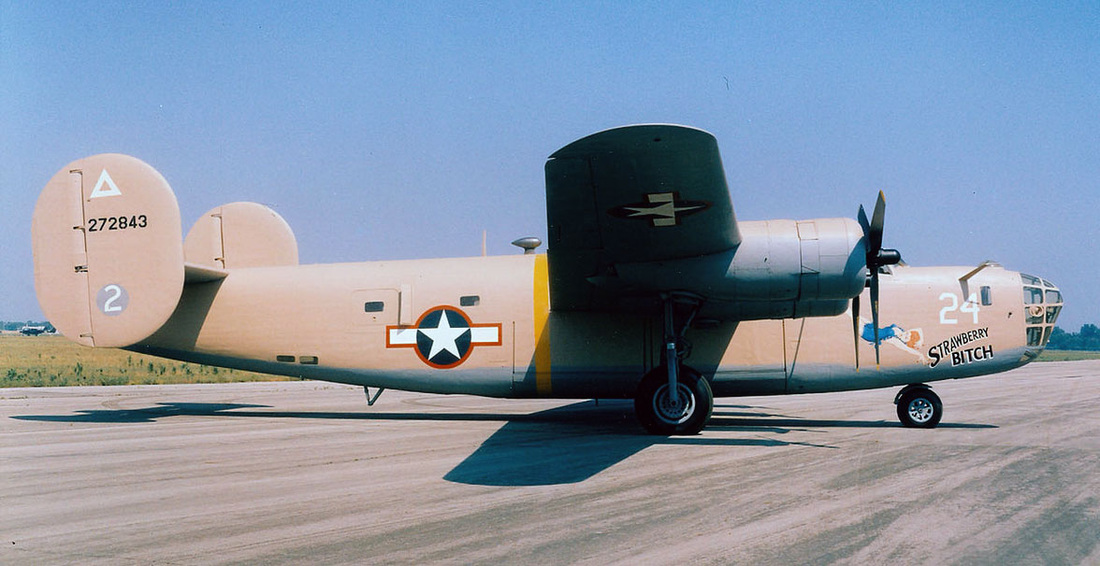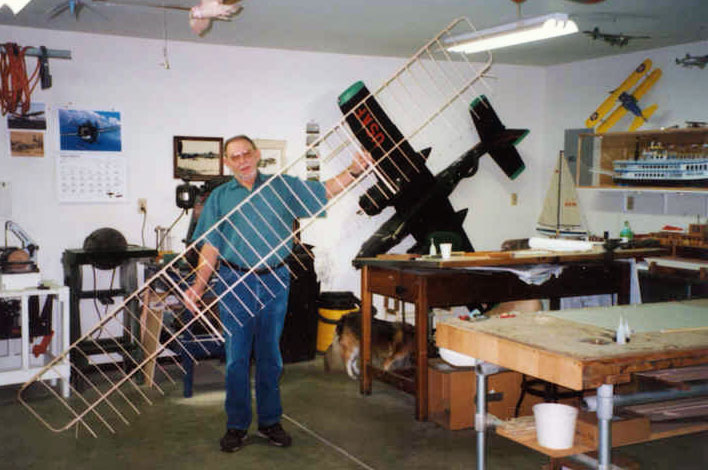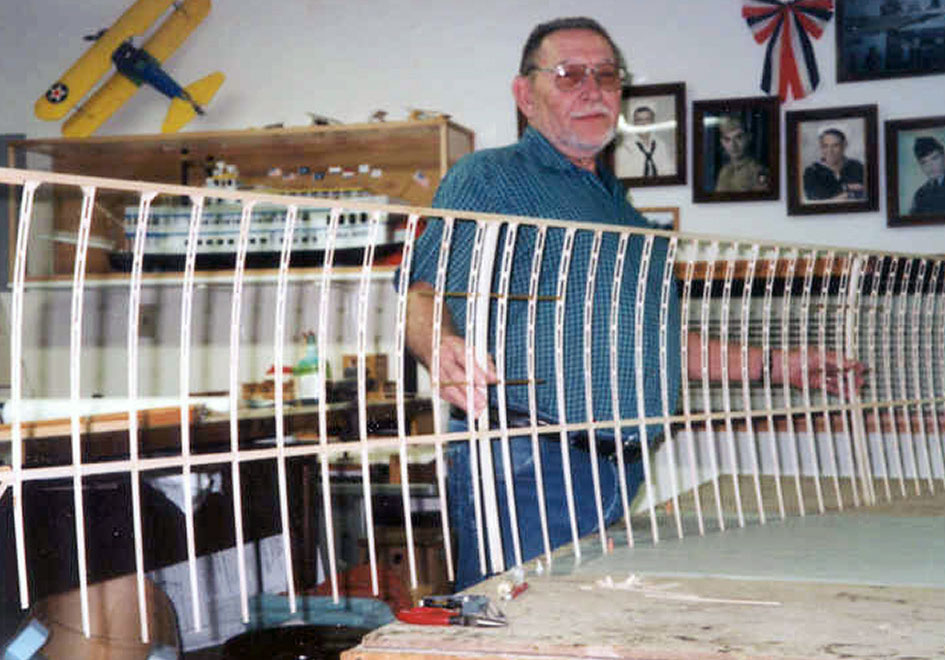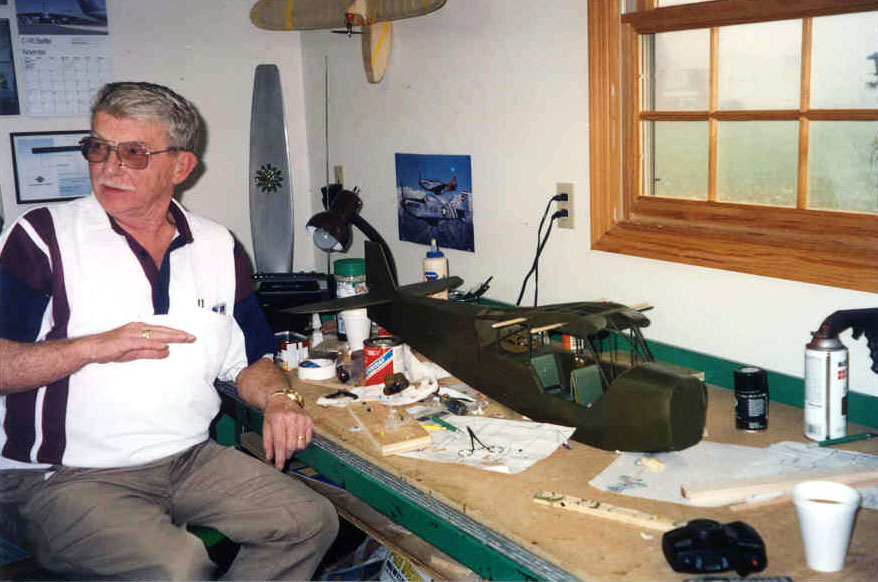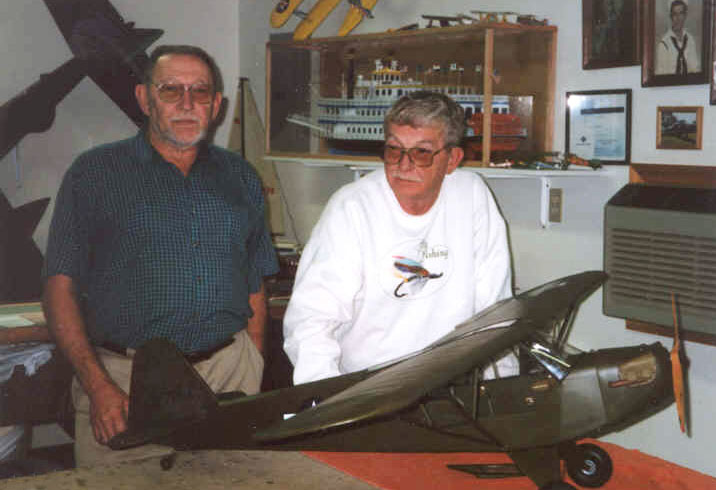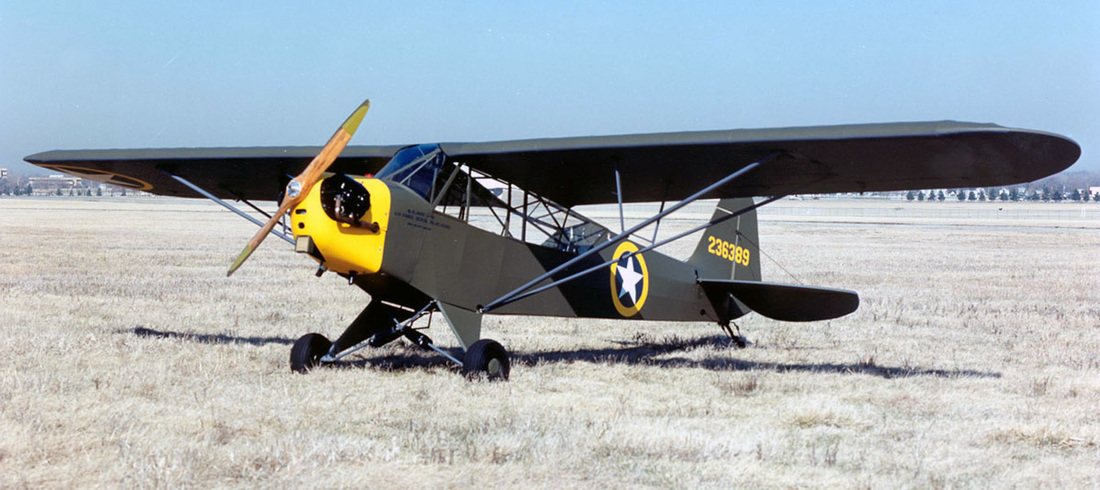Behind the scenes with the men who made
our amazing scale aircraft models
The museum has one of the best large scale model aircraft displays around and gallery visitors are understandably amazed at the quality and detail of the aircraft.
Below are photos of the construction of the B-24 Bomber scale aircraft, which is on display in the museum gallery. Glen Grube, Charles Abbott, and Joe Grube worked on the project.
The Grube Brothers' "Possum Works" was always a gathering place for museum volunteers to watch as they worked their magic, transforming pieces of wood and bits of metal into one-of-a-kind scale classic aircraft.
The skilled craftsmen designed and built these one-of-a-kind models at their shop in Columbus, Indiana called "The Possum Works," sort of a take off of the famous Clarence L. "Kelly" Johnson, Lockheed "Skunk Works."
The scale model aircraft were masterfully painted by Charles Abbott, a Cummins retiree.
Below are photos of the construction of the B-24 Bomber scale aircraft, which is on display in the museum gallery. Glen Grube, Charles Abbott, and Joe Grube worked on the project.
The Grube Brothers' "Possum Works" was always a gathering place for museum volunteers to watch as they worked their magic, transforming pieces of wood and bits of metal into one-of-a-kind scale classic aircraft.
The skilled craftsmen designed and built these one-of-a-kind models at their shop in Columbus, Indiana called "The Possum Works," sort of a take off of the famous Clarence L. "Kelly" Johnson, Lockheed "Skunk Works."
The scale model aircraft were masterfully painted by Charles Abbott, a Cummins retiree.
Joe and Glen Grube
Charles Abbot
Glenn Grube
Joe and Glenn Grube
Joe Grube preparing to hang the P-51 1/8 scale aircraft.
Glenn Grube working on the P-47 and P-51 projects at the Possum Works.
The Grube Brothers worked on scale model aircraft for display at the Atterbury-Bakalar Air Museum at their "Possum Works."
B-24 construction project
Bob Kirk, museum volunteer and former B-24 pilot, snapped these photos of the one-eighth scale B-24 construction project in progress at the "Possum Works."
Consolidated B-24D-160-CO Liberator 42-72815 on display
at the National Museum of the United States Air Force.
Photo from Wikipedia.
at the National Museum of the United States Air Force.
Photo from Wikipedia.
The B-24 was employed in operations in every combat theater during World War II. Because of its great range, it was particularly suited for such missions as the famous raid from North Africa against the oil industry at Ploesti, Rumania on August 1, 1943. This feature also made the airplane suitable for long over-water missions in the Pacific Theatre. More than 18,000 B-24 Liberators were produced.
SPECIFICATIONS
Span: 110 ft. 0 in.
Length: 67 ft. 8 in.
Height: 18 ft. 0 in.
Weight: 65,000 lbs. loaded
Armament: Ten .50-cal. machine guns plus a normal maximum load of 12,800 lbs. of bombs
Engines: Four Pratt Whitney R-1830-65s of 1,200 hp. ea.
Cost: $336,000
PERFORMANCE
Maximum speed: 290 mph.
Cruising speed: 215 mph.
Range: 3,700 miles
Service Ceiling: 28,000 ft.
SPECIFICATIONS
Span: 110 ft. 0 in.
Length: 67 ft. 8 in.
Height: 18 ft. 0 in.
Weight: 65,000 lbs. loaded
Armament: Ten .50-cal. machine guns plus a normal maximum load of 12,800 lbs. of bombs
Engines: Four Pratt Whitney R-1830-65s of 1,200 hp. ea.
Cost: $336,000
PERFORMANCE
Maximum speed: 290 mph.
Cruising speed: 215 mph.
Range: 3,700 miles
Service Ceiling: 28,000 ft.
The 1/4 scale Wright Flyer
The 1/4 scale Wright Flyer #1 is displayed in the Atterbury- Bakalar Air Museum lobby. The Wright Flyer #1 was constructed from a copy of the Smithsonian's original plans. Joe Grube has the Wright Flyer wing sections in hand and you can see how large the 1/4 scale aircraft is.
Wright Flyer #1 on display at the museum
Wright Flyer Specifications
Span: 40 ft. 4 in.
Length: 21 ft.
Height: 9 ft. 3 in.
Weight: 605 lbs. empty
Engine: Gasoline, 12 hp
Manufacturer:
To fly the airplane, the pilot lay prone with his head forward, his left hand operating the elevator control. Lateral control was achieved by warping the wing tips in opposite directions via wires attached to a hip cradle mounted on the lower wing. The pilot shifted his hips from side to side to operate the mechanism, which also moved the rudder.
Span: 40 ft. 4 in.
Length: 21 ft.
Height: 9 ft. 3 in.
Weight: 605 lbs. empty
Engine: Gasoline, 12 hp
Manufacturer:
To fly the airplane, the pilot lay prone with his head forward, his left hand operating the elevator control. Lateral control was achieved by warping the wing tips in opposite directions via wires attached to a hip cradle mounted on the lower wing. The pilot shifted his hips from side to side to operate the mechanism, which also moved the rudder.
the 1/8 scale L4
Glenn Grube working on the 1/8 scale L4 at the "Possum Works."
Joe and Glenn Grube putting the final touches on the L-4 at the "Possum Works." L-4 aircraft were used at the Atterbury Army Air Field as part of the Glider training.
Piper L-4 "Grasshopper" at the National Museum of the United States Air Force. (U.S. Air Force photo)
Go HERE to view the scale aircraft exhibits...
